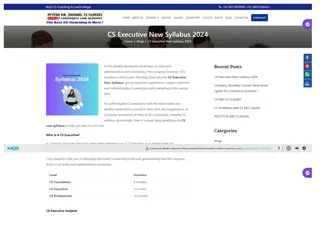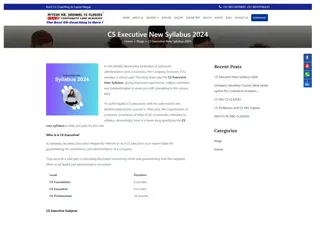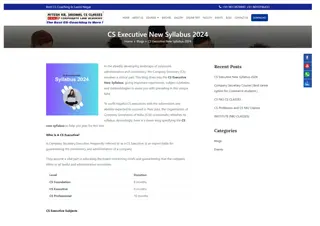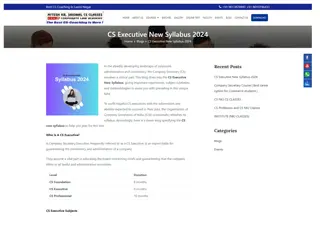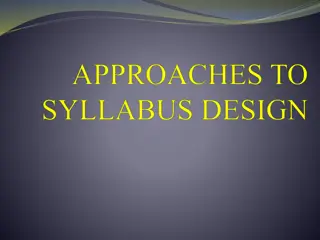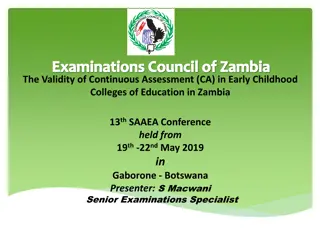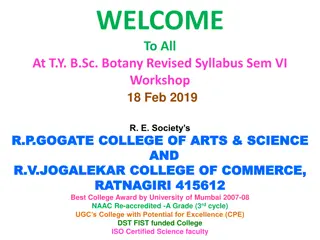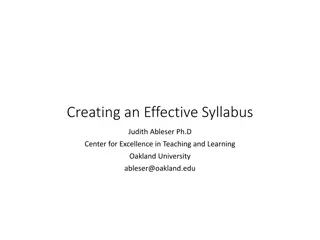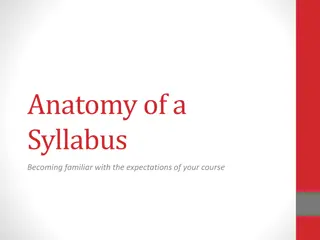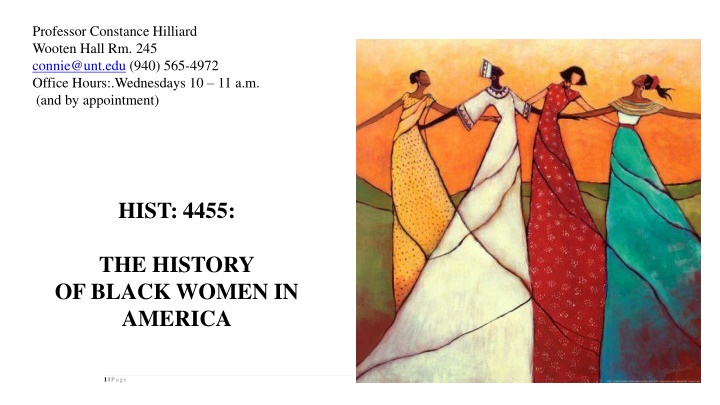
Exploring the History of Black Women in America - HIST 4455 Course by Professor Constance Hilliard Wooten Hall
Delve into the rich historical narrative of African-American women in the United States through the insightful course offered by Professor Constance Hilliard Wooten Hall at the University of North Texas. Discover the origins, struggles, triumphs, and cultural legacy of Black women, exploring themes such as Black feminism, Civil Rights, and health disparities. Engage with thought-provoking questions surrounding ancestry, racism, and epistemology. Uncover the significant role of Black women in shaping American history and society.
Download Presentation

Please find below an Image/Link to download the presentation.
The content on the website is provided AS IS for your information and personal use only. It may not be sold, licensed, or shared on other websites without obtaining consent from the author. If you encounter any issues during the download, it is possible that the publisher has removed the file from their server.
You are allowed to download the files provided on this website for personal or commercial use, subject to the condition that they are used lawfully. All files are the property of their respective owners.
The content on the website is provided AS IS for your information and personal use only. It may not be sold, licensed, or shared on other websites without obtaining consent from the author.
E N D
Presentation Transcript
Professor Constance Hilliard Wooten Hall Rm. 245 connie@unt.edu (940) 565-4972 Office Hours:.Wednesdays 10 11 a.m. (and by appointment) HIST: 4455: THE HISTORY OF BLACK WOMEN IN AMERICA 1 | P age
Course Description African-American women are an admixed population composed on average of 75% Niger-Kordofanian West African DNA, 24% DNA from the Northern European male line, and 1% Native American DNA ancestry. This course will be divided into two parts. PART ONE will explore the historical narrative of this group, including their African origins, reasons for vulnerability to the Transatlantic Slave Trade, Sexual Slavery, the Post-Civil War era, Black women s struggles and triumphs in modern times, as well as Important Historical Figures. PART TWO will offer a thematic focus. It will cover such topics as Racism; Feminism, Black Feminism & Colorism; Civil Rights, Black Nationalism & Electoral Politics; Epistemology (Ways of Knowing); Intersectionality; the Black Family; the Black Aesthetic; Health, Genomics & Body Image; Spirituality, Rhythm; Survival Strategies.
Course Requirements and Grading: Course Requirements and Grading: Mid-Term Exam Final -Exam Term paper Quizzes Soul Project 25% 30% 25% 15% 5%
READINGS & EXAM SCHEDULE I. ALL READINGS FOR THIS COURSE WILL BE UPLOADED TO CANVAS AND INCLUDE THE DATES BY WHICH THEY MUST AS ONLINE LINKS BE READ. QUIZZES WILL BE GIVEN (ONLINE) ON THE FIRST MONDAY OF EACH MONTH, BEGINNING OCTOBER 2. THEY WILL TEST YOU ON THE MATERIAL THAT YOU VE READ THE PREVIOUS MONTH. II. MIDTERM EXAM (ONLINE) OCTOBER 13, 2023 III. TERM PAPER DUE (SUBMIT ONLINE) NOVEMBER 24, 2023 IV. FINAL EXAM (ONLINE) SATURDAY DECEMBER 9, 2023 10:30 12:30 PM V.
Learning Objectives This course looks forward to answering the following questions: 1. In what ways are health influenced by ancestry? 2. Does Africa have a history? 3. Does race exist and what is ancestry? 4. What part of Africa did Black American women come from? 5. Why were they enslaved? 5. What was the experience of sexual slavery? 6. What cultural features are a legacy of their African homeland? 7. What epistemological features are a legacy of their homeland?
8. Who are the most memorable historical figures in Black women s history and why? 9. In what ways has slavery s legacy affected the Black family? 10. What role do Black women play in the feminist movement? 11. What is the cultural legacy of African-American women? 12. What stereotypes do contemporary Black women face? 13. How would we define the Black aesthetic? 14. Describe the epistemological differences between Black female culture and the American mainstream. 15. What role does rhythm play in knowledge acquisition? 16. What factors account for the distinctive health disparities gap faced by African-American women, including complications in childbirth? 17. What is soul wisdom?
SOUL PROJECT (This assignment can be handed in at any time before the end of the semester but don t procrastinate!) The Soul Project represents an opportunity for students to explore the expressive culture of Black women in America, through presentation of a project of their own creation inspired by the subject matter of this course. It may involve such activities as the writing of a poem, short story, essay, artistic expression in preparing a drawing, sketch, sculpture, craft making, a short dance, singing or instrumental performance, and so forth. . Because American cultural values facts (empiricism) over creativity, this assignment is an opportunity to engage a part of your mind-body that is often times overlooked and perhaps even starved. So, you may not have made a drawing since kindergarten. But no matter. It s the effort that counts and the grading of these projects is past/fail, i.e. as long as you turn something in, you pass. As this project represents an opportunity to express your own creativity, please refrain from merely reciting someone else s poetry or writings.
TERMPAPER The Term paper (10 to 12 pages typed) must present a factual (empirical), well-reasoned examination of an issue relating to either the historical or the thematic segment of this course. This paper can also relate to the relationship of another group to black women, e.g. white males, white females, Native Americans, Latinas or other ethnicities). This paper must demonstrate clarity of thought and an effective use of source materials. Term papers will also be expected to follow accepted practices of form and style for academic writing, and make accurate use of citations, footnotes, bibliography. Do not hand in a term paper that does not use citations. The citation style to be used for this research paper will be Turabian Referencing. If you are not familiar with this citation style, look it up on the Internet. Cited sources are indicated in your text by a superscript number placed at the end of the sentence. Using Microsoft Word, the superscript number is created by clicking on References , then clicking on endnote or footnote. Plagiarism. If you quote or even paraphrase another author's work without including a reference, this is called plagiarism. This is cheating and will be penalized with a grade of ZERO on the paper.
DISABILITY STATEMENT: Any student with special circumstances covered by the Americans with Disabilities Act should register with the Office of Disability Accommodation (ODA), Suite 322, University Union Building, and also inform the instructor of the class. Reasonable adjustments will be made to accommodate the special needs of students with disabilities where such adjustments are necessary to provide equality of educational access. Students who have registered with the ODA should make an appointment to discuss their disabilities accommodation requests with the instructor.
COURSE OUTLINE: I. The African Genome A. The Venus de Willendorf B. Introduction to the History of the Human Genome C. The African Genome & Out-of-Africa Migrations D. Race & Genomics II. Early History of Africa A. African Geography B. Ancient Egypt, the Nubian Aesthetic & How North Africa Became White C. Decentralized Societies III. The Status of Women in West Africa Prior to the Transatlantic Slave Trade A. Early history of West Africa B. Gender roles and social structures C. Ecological variables D. Religion & Spirituality
IV. The Transatlantic Slave Trade A. Special Vulnerabilities B. The Death March to the Coast C. Middle Passage V. Early African women in America A. The Construction of the American slave institution B. The construction of the white and black races C. Slave hierarchies and long-term implications VI. Sexual Slavery & the Vanishing Cherokee DNA A. Mitochondrial DNA tracing the maternal line track 99.9 of the original enslaved Niger- Kordofanian farming populations from West, West Central or Southwest Africa with 0% Khoisan hunter-gatherers (plantation owners only purchased skilled farmers). B. the percentage of Native American DNA- 1.33%. C. the Northern European DNA mix is 22.45%
VII. The Slave Family A. The Role of the Slave Mother B. Medical Experimentation C. Socialization for Survival D. Influences on contemporary black family life VIII. SOME EARLY BLACK WOMEN A. Phillis Wheatley (c.1753- 1784) B. Sally Hemings (1773 - 1835?) C. Jarena Lee (1783 - c.1850) D. Sojourner Truth (c.1797 - 1883) E. Harriet Tubman (c.1822 1913) 12 | P age
IX. Civil War, Reconstruction & Post-Reconstruction A. Diverse roles of African-American women B. Ida Wells Anti-Lynching Campaign C. Black Sororities D. Club Women X. The Harlem Renaissance A. the Great Migration B. Singers/Musicians C. Writers 13 | P age
XI. Black Womens Involvement in Politics A. The Civil Rights Movement (NAACP, Rosa Parks, Little Rock Nine B. Voting Rights Act C. Electoral Politics XII. Black Nationalism A. Booker T. Washington B. Marcus Garvey Movement C. Nation of Islam
XIII. Feminism A. History of Feminist Movement B. Black Feminism/Intersectionality C. Womanism D. Hip Hop Feminism E. Stereotypes & Controlling Images XIV. Historical Insights on Nutrition & Health Challenges A. Changes in diet after Civil Rights Movement B. Gluten, sodium and calcium C. Rise in hypertension D. Increased susceptibilities to Metabolic disorders such as Diabetes II, pre-eclampsia in childbirth and metastatic cancers (Triple Negative Breast Cancer, Ovarian, Colorectal Cancers and Myeloma E. Mental Health and Coping with Stress 15 | P age
XV. Survival Strategies A. Expressionism B. Epistemology (Ways of Knowing) C. Secular Spirituality D. Science E. Harmonizing Mind and Body


